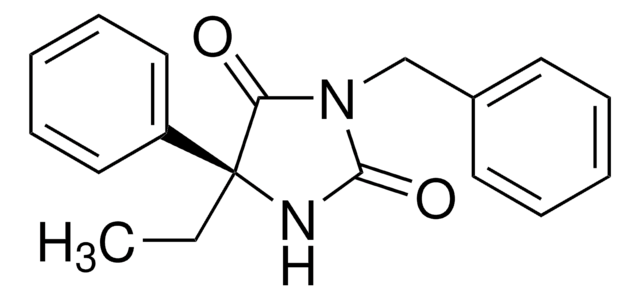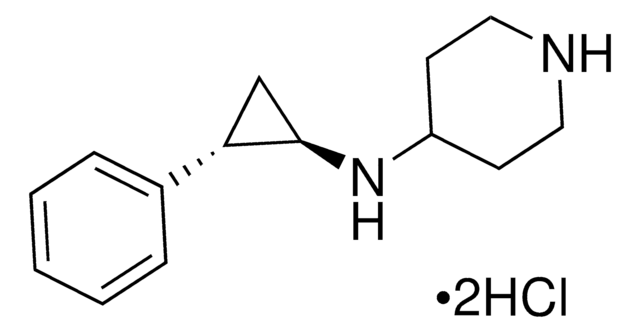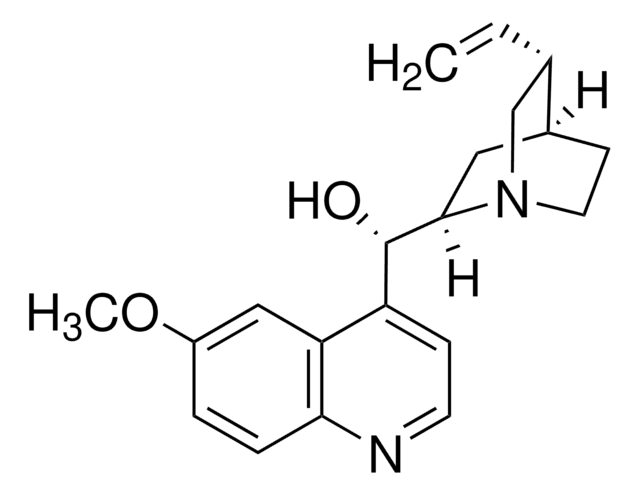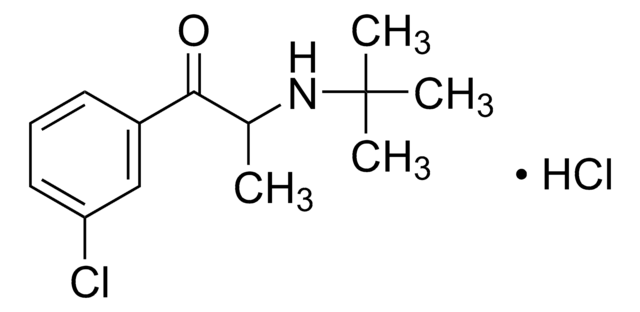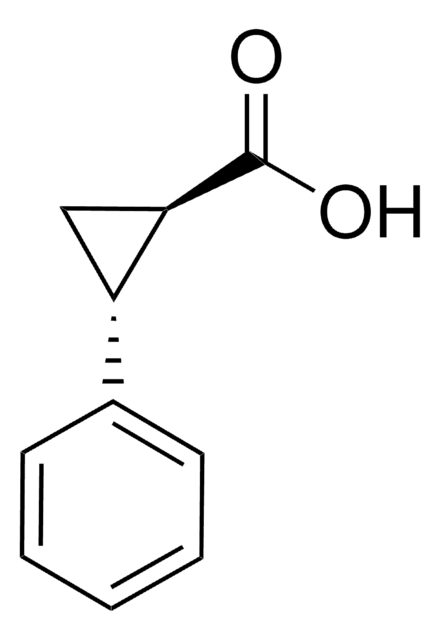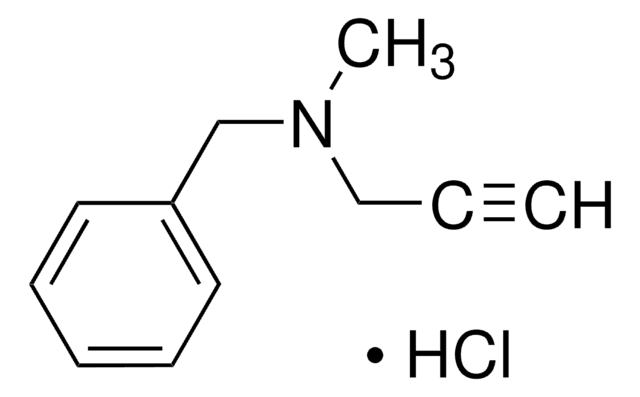P8511
trans-2-Phenylcyclopropylamine hydrochloride
Sinónimos:
Tranylcypromine
About This Item
Productos recomendados
origen biológico
synthetic (organic)
Análisis
≥97% (TLC)
formulario
powder
mp
162-169 °C (lit.)
solubilidad
ethanol: 50 mg/mL, clear to slightly hazy
temp. de almacenamiento
2-8°C
cadena SMILES
Cl.N[C@@H]1C[C@H]1c2ccccc2
InChI
1S/C9H11N.ClH/c10-9-6-8(9)7-4-2-1-3-5-7;/h1-5,8-9H,6,10H2;1H/t8-,9+;/m0./s1
Clave InChI
ZPEFMSTTZXJOTM-OULXEKPRSA-N
Información sobre el gen
human ... MAOA(4128) , MAOB(4129)
¿Está buscando productos similares? Visita Guía de comparación de productos
Acciones bioquímicas o fisiológicas
Características y beneficios
Palabra de señalización
Danger
Frases de peligro
Consejos de prudencia
Clasificaciones de peligro
Acute Tox. 3 Oral
Código de clase de almacenamiento
6.1C - Combustible acute toxic Cat.3 / toxic compounds or compounds which causing chronic effects
Clase de riesgo para el agua (WGK)
WGK 3
Certificados de análisis (COA)
Busque Certificados de análisis (COA) introduciendo el número de lote del producto. Los números de lote se encuentran en la etiqueta del producto después de las palabras «Lot» o «Batch»
¿Ya tiene este producto?
Encuentre la documentación para los productos que ha comprado recientemente en la Biblioteca de documentos.
Los clientes también vieron
Artículos
Epigenetic modifications are thought to occur through two key interconnected processes—DNA methylation and the covalent modification of histones.
Nuestro equipo de científicos tiene experiencia en todas las áreas de investigación: Ciencias de la vida, Ciencia de los materiales, Síntesis química, Cromatografía, Analítica y muchas otras.
Póngase en contacto con el Servicio técnico

